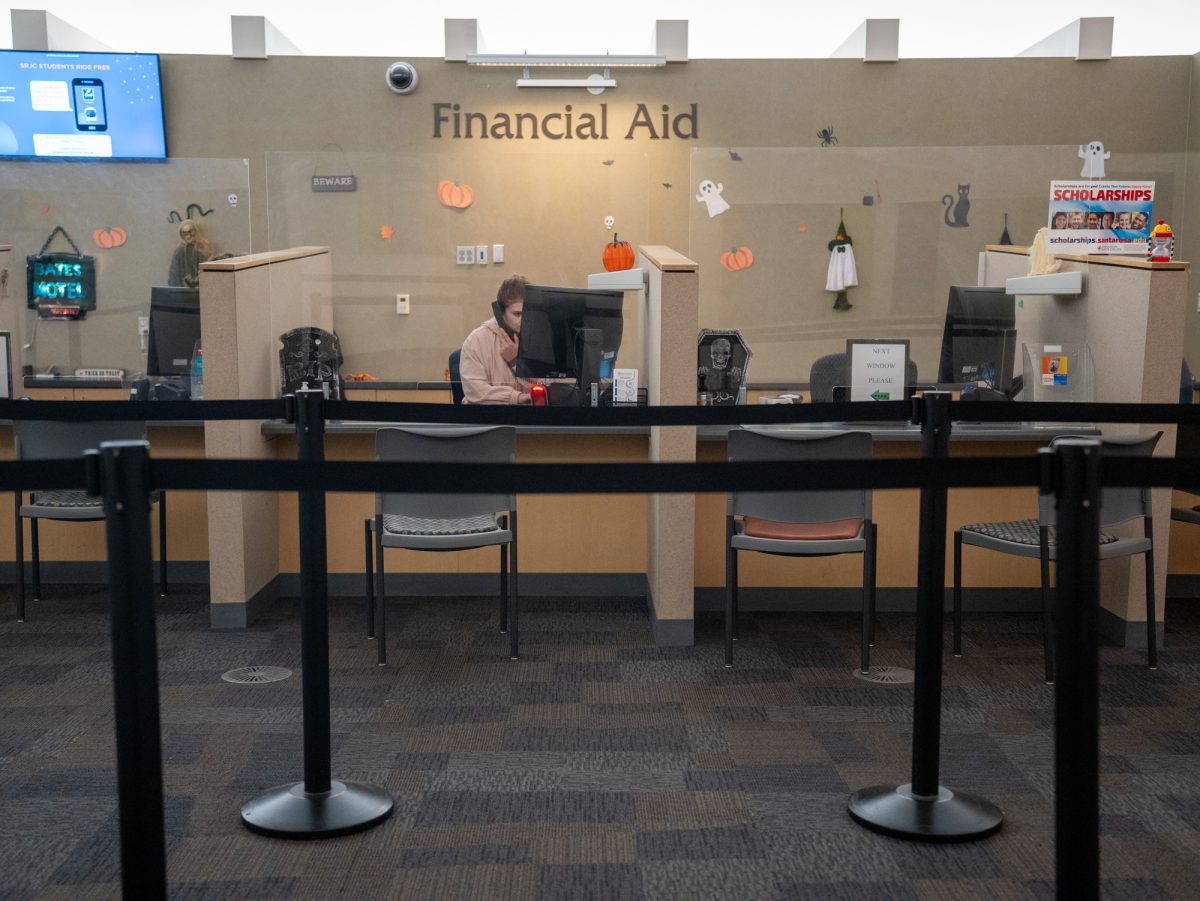Despite the many delays and glitches surrounding the release of the 2024-2025 FAFSA and subsequent problems, the Santa Rosa Junior College Financial Support Office worked overtime to get students their funds.
The Department of Education’s botched FAFSA roll-out forced many financial aid offices, including SRJC’s, to scramble to process the delayed forms. Once the forms had been submitted, typically financial aid departments could process updates, such as verification and data correction, in batches. However, in August this year, the department notified schools that it would not allow them to submit batch updates. For the SRJC financial aid office, this resulted in staff members processing the corrections by hand.
The FAFSA glitches most greatly impacted SRJC students from mixed families, said Rachael Cutcher, director of SRJC student financial support and services.
“None of the workshops would help with [issues facing students from mixed families], so it was kind of just figuring it out at home,” said Chase Jacinto — a first-year, first-generation SRJC student.
To mitigate the barriers to the application process, the office staff pulled long hours — working early mornings, late evenings and on weekends — to ensure that students received their funding despite the cumulative delays caused by the 2024-25 FAFSA glitches.
“Our team has been out in our community — in our high schools, having cash for college nights, evenings, weekends — to really help those families complete their applications. So the hard work that our team has done resulted, actually, in our being able to pay more students their first disbursement than we did at this time last year,” Cutcher said.
For students still waiting for funds, she explained, “Financial aid can come in at any time. It depends on when a student submitted their application.”
Cutcher emphasized that the office is always available to help.
“A student can submit their application today and still be eligible,” she said. “They can submit it all through the fall or even into the spring, and still be eligible for aid.”
Looking ahead, Cutcher envisions more long hours to process the 2025-2026 FAFSA. At the National Association of Student Financial Aid Administrators (NASFAA) conference in July, the Department of Education promised that next year’s FAFSA would roll out on the traditional date, October 1. “And shortly thereafter, they sent out an announcement saying, ‘No, it’s going to be Dec. 1,’” Cutcher said. This will delay the entire process two months and shorten the timeline for students, families and financial aid officers, similar to last year. For students and families, this gives them less time to plan for next steps, especially for those transferring to four-year colleges.
Yet, even with the challenges, at the end of the first week, Cutcher feels mildly optimistic.
“I feel really proud of the work that our office did in our school to make sure that we were paying students on time, so that they could get started with their academic year with as much aid as they could potentially get at this point in time, but also apprehensive about what the future brings if the Department of Ed continues to inform us of delays again and again,” Cutcher said.
Despite the SRJC office’s exertions, students experienced disruptions in their fall disbursements. The Oak Leaf asked three dozen students whether their fall funding arrived on time. Of the thirty-six students, ten reported that their money arrived on time. Four students said that the money showed up late, which ranged from “a tiny bit late” to “about a week.” Ten students said that the office was still in the process of funding their financial aid. Of those who are still in the process, seven said that they had submitted their forms late and three said they had submitted their forms on time.
About a dozen of the students polled did not submit their FAFSA. Some students explained they didn’t qualify for aid because they had maxed out their federal financial aid already. Others were daunted by the forms and didn’t finish filling them out. Or, as one student said, “I’m gonna be honest — it was too complicated. I didn’t do it, I just paid the whole thing.”
Many students experienced complications when attempting to submit their 2024-25 FAFSA, which The Oak Leaf covered earlier this year. “There were complications with the form,” said a student who preferred not to provide her name given the sensitivity around immigration status.
Another student said, “the whole information process, getting the forms, not knowing if I was going to get aid, got me stressed.” This was his first time applying for financial aid; however, once he received confirmation that his forms were being processed, he relaxed and the funds showed up before the start of the fall semester.
One student said, the office “was good at submitting forms, but disbursements could be delayed.” A few students described leaving voice messages at the office but not hearing back.
The financial aid office does not survey students to assess whether they received their financial aid packages and, if so, on time, Cutcher said. She acknowledged the convoluted process creates challenges for students and encourages students to reach out to the financial aid office and The Dream Center for assistance navigating the process. It’s not too late to apply. “A student could submit their application today and still be eligible – really all through the fall or even into the spring, and still be eligible for aid,” she said.
Do you have a financial aid story to share – success, failure, or “just right”? Send your story to Amy Moore, at The Oak Leaf.





